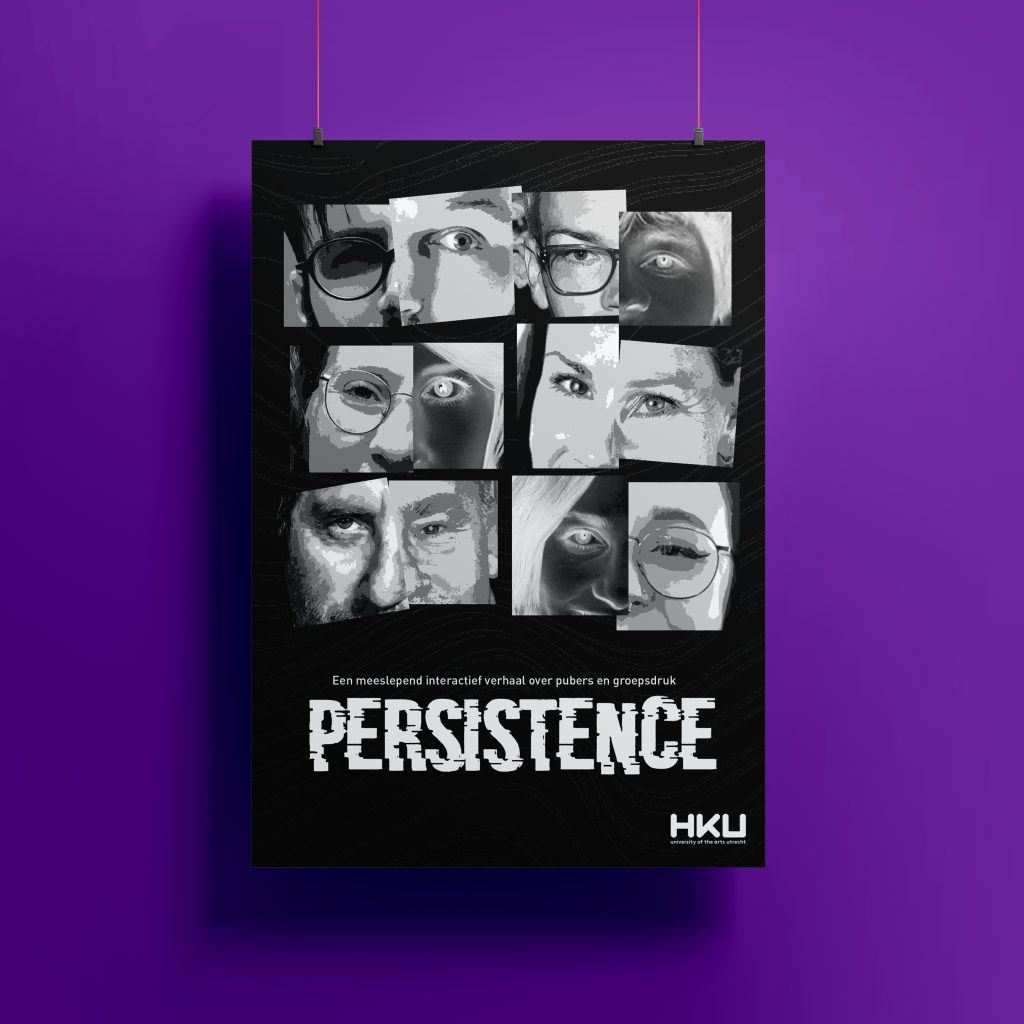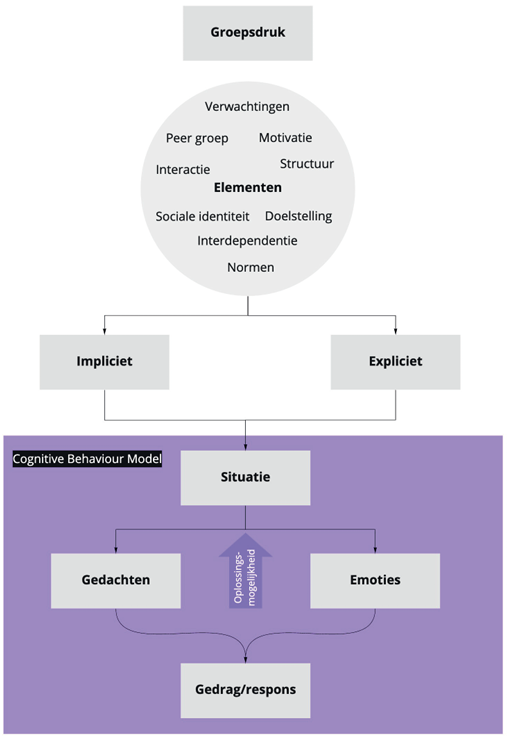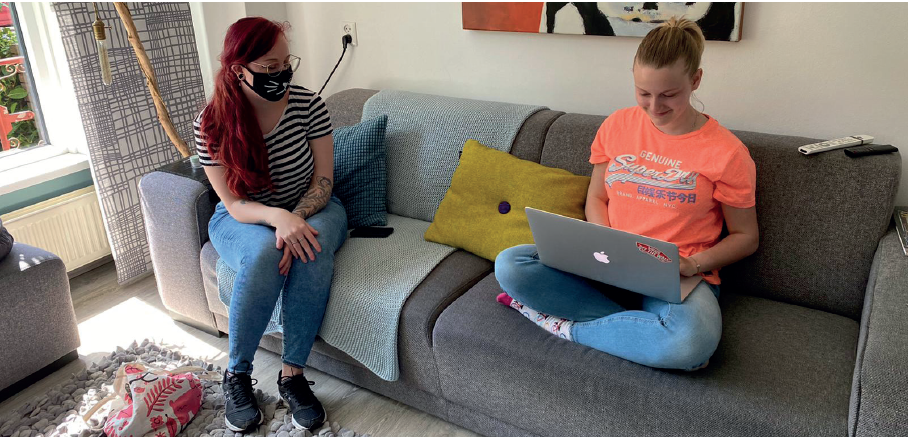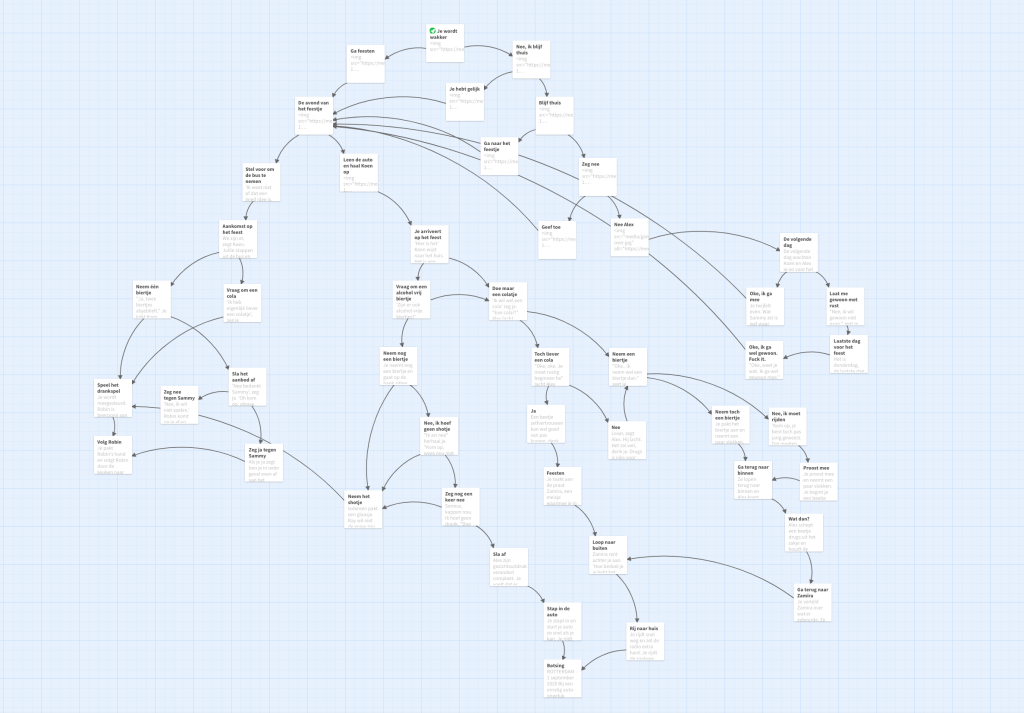Peer Pressure Among Teens: increase insight into the negative consequences with storytelling and game principles

For my master thesis I worked on a project about peer pressure. The aim of this project was to examine how storytelling and game design principles can provide insight into peer pressure and its consequences. The design had to be able to guide an adolescent aged 16 to 18 to make a rational choice so that he/she chooses a response that he/she supports. The question ‘How can resources such as storytelling and various principles from game design in educational teaching materials increase young people’s understanding of peer pressure and at the same time contribute to resilience against it?’ was central to this research.
Research has shown that adolescents have poor ability to make rational choices and are therefore more sensitive to peer pressure. This is because the emotional part of the brain is still unstable. When adolescents are with peers, this part works less well. Short-term profit comes first and the rational part gets out of balance.
Due to peer pressure and their reduced ability to make rational choices, adolescents are more prone to display risky behaviour. It is therefore important that peer pressure and its consequences/effects are brought to the attention.
To come up with a solution to the peer pressure problem, it is important to first look at how peer pressure works exactly and where an intervention should take place. A conceptual model has been drawn up for this purpose. The moment where there is a solution possibility is when helping to make rational choices, so after the part where the situation is going. This is because the individual who experiences peer pressure has the choice to act from reason or emotion. The solution devised in this study helps to provide insight into rational choices in order to encourage the adolescent to make a choice for a response that he supports.

As an answer to the research question I developed the concept of Persistence. This is an interactive story in which the adolescent is taken along in a story about a house party and is confronted with alcohol and drugs. The story is individually played in class and works as a conversation starter.
The story has multiple endings where the player is taken along in the choices he makes. The player determines the course of the story and encounters choices that have to do with peer pressure. After experiencing the interactive story, there is a debriefing in class where the story and how adolescents should deal with peer pressure are discussed.

To develop Persistance several experiments have been carried out and interviews have taken place with experts. The insights I got have shown that it is important to give a teenager insight on the effects of their choices. This gives them better insight into a situation and the consequences that wrong choices can have. During the research, insights were collected and tests were conducted with stakeholders such as the Trimbos Institute, an education expert, a philosopher and the target group itself.

